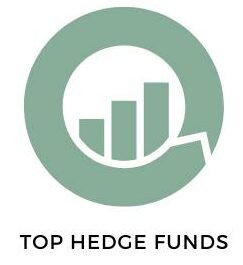In recent years, the world of hedge funds has seen a notable shift toward quantitative strategies. Quantitative hedge funds—often referred to as quant funds—use advanced mathematical models, algorithms, and vast datasets to make investment decisions. As traditional investment strategies evolve, quantitative methods are gaining significant traction, changing the landscape of hedge fund trading.
This blog explores the rise of quantitative hedge funds, how they operate, and what traders need to know about this emerging trend in the financial markets.
What Are Quantitative Hedge Funds?
Quantitative hedge funds employ algorithmic trading strategies driven by complex mathematical models and large datasets. These funds rely on automated systems to execute trades based on statistical analyses, rather than human discretion or market sentiment. The models used by quant funds are designed to identify patterns, predict market movements, and make rapid, data-driven decisions to maximize returns.
While traditional hedge funds typically rely on human analysis of market trends, macroeconomic factors, and company fundamentals, quantitative hedge funds use a more systematic approach, focusing on historical data, statistical arbitrage, and machine learning techniques to identify trading opportunities.
The Key Drivers Behind the Rise of Quantitative Hedge Funds
Several factors have contributed to the rise of quantitative hedge funds. Here are some of the key drivers:
1. Advances in Technology and Data Science
- Big Data: The availability of vast amounts of data from diverse sources—such as financial markets, social media, economic reports, and satellite imagery—has enabled quantitative hedge funds to gain an edge. They use this data to develop sophisticated models and identify profitable trading opportunities.
- Artificial Intelligence (AI) and Machine Learning: The integration of AI and machine learning in quantitative trading strategies allows funds to improve their models continually by learning from past trades and adjusting strategies based on real-time data. These technologies have significantly enhanced the predictive capabilities of quant funds.
- Computational Power: The rise of more powerful computing systems and cloud-based solutions has allowed quantitative hedge funds to run complex models and simulations at scale, providing them with faster and more accurate insights into market conditions.
2. Increased Efficiency and Speed
Quantitative hedge funds rely on high-frequency trading (HFT) and automated algorithms that can execute trades in milliseconds. This speed advantage allows them to capitalize on small price discrepancies or inefficiencies that would be impossible for human traders to exploit manually. With markets moving faster than ever, the ability to react quickly to new data is a key competitive advantage for quant funds.
3. Institutional Adoption
Quantitative strategies have become more appealing to institutional investors due to their potential for higher risk-adjusted returns and lower correlation to traditional markets. These funds offer institutional investors the ability to diversify their portfolios and gain exposure to assets or strategies that might otherwise be difficult to access. As a result, institutional adoption of quant funds has grown, leading to a surge in the number of quant-based hedge funds.
How Do Quantitative Hedge Funds Operate?
Quantitative hedge funds rely on a variety of strategies that focus on different aspects of the market. Here are a few of the most common approaches:
1. Statistical Arbitrage
Statistical arbitrage (or stat arb) involves exploiting price discrepancies between related financial instruments. Quant funds use sophisticated algorithms to identify and capitalize on these temporary inefficiencies, typically in equities, commodities, or currencies. For example, if two stocks historically move in correlation with each other, a quant fund might take opposing positions on the two stocks when the correlation diverges, betting that the prices will converge again.
2. Machine Learning and Predictive Analytics
Quantitative funds use machine learning models to analyze vast amounts of historical and real-time market data. By using these models, they can identify patterns, predict future market movements, and adapt their strategies over time. Machine learning helps these funds improve their trading algorithms, allowing them to evolve with the market and gain an edge over competitors.
3. High-Frequency Trading (HFT)
High-frequency trading relies on sophisticated algorithms that execute large volumes of trades in fractions of a second. The primary goal of HFT is to profit from very short-term market inefficiencies, often in the range of milliseconds. This type of trading is best suited for markets that have high liquidity and low transaction costs, such as equities and futures contracts.
4. Trend Following
Trend-following quant strategies aim to identify and profit from established market trends, whether they are bullish or bearish. Quant funds that use this strategy typically deploy algorithms that analyze historical price data to identify upward or downward trends in stocks, commodities, or other assets. Once a trend is detected, the algorithm will initiate buy or sell orders accordingly.
5. Sentiment Analysis
Some quant funds employ sentiment analysis to incorporate non-traditional data sources, such as social media, news, or financial reports, into their trading strategies. Using natural language processing (NLP) and machine learning, these funds analyze how the sentiment around a particular asset is shifting and incorporate this information into their models. This strategy is especially popular in crypto markets, where public sentiment can drive rapid price changes.
Why Are Quantitative Hedge Funds Gaining Popularity?
1. Scalability
Quantitative strategies are easily scalable. Once a model is developed and tested, it can be applied across a wide range of assets and markets. This scalability is a key reason why quant funds have grown in prominence, as they can quickly expand their trading operations to new markets and asset classes without requiring additional human capital.
2. Reduced Emotional Bias
One of the biggest advantages of quantitative trading is the lack of human emotion involved. While traditional traders might make impulsive decisions based on fear, greed, or market sentiment, quantitative funds rely strictly on data and mathematical models. This removes the potential for bias, leading to more disciplined and systematic trading strategies.
3. Diversification
Quantitative hedge funds often utilize strategies that are uncorrelated with traditional markets. By trading across multiple asset classes, timeframes, and geographic regions, quant funds can offer better diversification for institutional investors. This reduces the overall risk of a portfolio while potentially improving returns.
4. Increased Accessibility
While quantitative trading was once restricted to elite hedge funds with access to massive computing power, advancements in cloud computing and software-as-a-service (SaaS) platforms have made quantitative strategies more accessible to a wider range of investors. Retail traders can now access some basic quant models, opening up the world of algorithmic trading to individual investors.
What Traders Need to Know About Quantitative Hedge Funds
1. Complexity of Models
Quantitative trading strategies are highly complex and often difficult for the average trader to understand. As a result, while these funds may seem like a “black box,” they are backed by deep expertise in data science, programming, and financial theory. Traders looking to adopt a quant approach should be prepared to invest in significant research and development to design, test, and optimize their models.
2. Technology and Infrastructure Requirements
Running quantitative strategies requires significant infrastructure and access to high-quality data. Traders interested in adopting a quantitative approach need to be comfortable with programming, data analytics, and machine learning, as well as the technology needed to process large amounts of real-time data.
3. Increased Competition
The rise of quantitative hedge funds has also led to increased competition in the markets. As more funds implement similar algorithms, certain strategies, such as statistical arbitrage, may become crowded, reducing their profitability. As a result, it is crucial for traders to innovate and continuously improve their models to maintain a competitive edge.
4. Risk Management
Quantitative trading is not risk-free. While algorithms can mitigate emotional decision-making, they are still subject to market risk, model risk, and operational risk. Traders need to implement robust risk management strategies to prevent significant losses, particularly during extreme market events that may disrupt algorithmic models.
Conclusion
Quantitative hedge funds are rapidly reshaping the world of finance, offering highly efficient, data-driven, and scalable strategies that have attracted both institutional investors and retail traders. By using advanced technologies such as machine learning, big data analytics, and high-frequency trading algorithms, these funds are able to exploit market inefficiencies and identify trading opportunities faster than human traders ever could.
For traders, understanding the rise of quantitative hedge funds is essential. Whether you are looking to incorporate quantitative strategies into your own trading or simply trying to understand how these funds are reshaping the financial markets, staying informed about these emerging trends will be crucial to remaining competitive in the fast-evolving world of finance.













